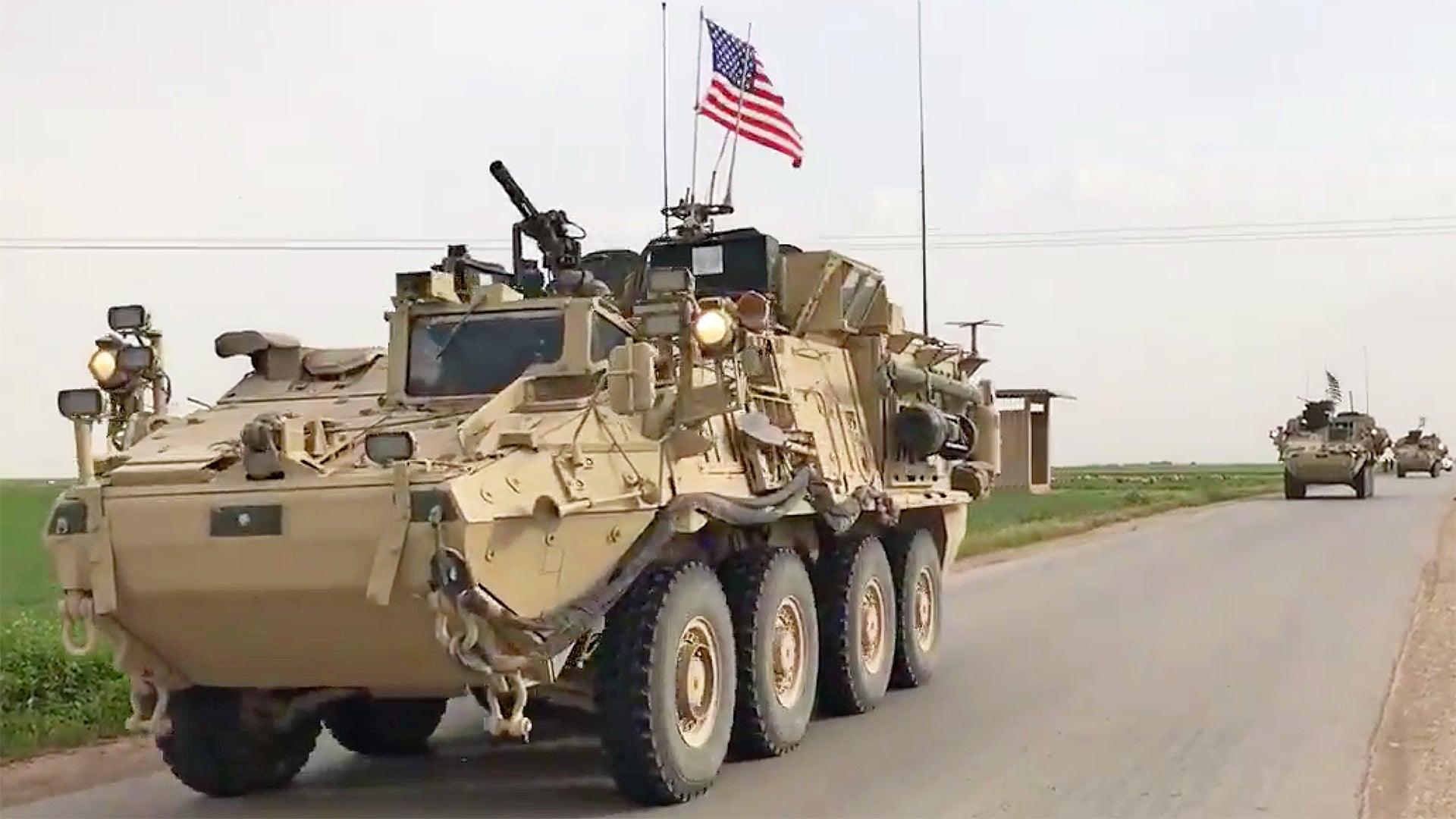Images and videos have appeared on social media showing American special operations forces riding in Stryker armored vehicles in northern Syria for the second time in as many months. The very visible moves come as tensions flare between the United States and Turkey following an air strike on a Kurdish group helping fight ISIS.
On April 28, 2017, various accounts on Twitter began showing at least three Stryker eight-wheeled armored carriers traveling in a convoy with members of the People’s Protection Units, better known by their Kurdish acronym YPG. The U.S. forces were reportedly in the vicinity of Al-Darbasiyah, also known as Dirbêsiyê, a town near the Turkish border in the semi-autonomous region that Kurdish groups refer to as Rojava.
Along with large U.S. flags, the vehicles had tan- or sand-colored camouflage schemes and one carried a minigun. Another featured a large communications antenna. This made them visually distinct from four other Strykers that appeared further west near the contested town of Manbij in March 2017. We don’t know if the examples in are new additions to the theater or just newly painted and rearmed, but there is some evidence of the standard green paint job underneath the new coating.
Earlier in April 2017, the U.S. Air Force did expand an airstrip near Kobani to allow C-17 cargo planes to step up deliveries ahead of a likely up-coming assault into ISIS’ de facto capital of Raqqa. Each one of the four-engine transports can carry up to three combat-ready Strykers.
But regardless of how many Strykers there are in the country or how they got there in the first place, it’s their apparent role that’s most significant. Though the Pentagon is primarily focused on fighting ISIS throughout the region, these mobile special operations elements seem to be spending a significant amount of time just keeping the peace between America’s partners in that counter-terrorism campaign, namely the YPG and Turkey.
When the first Strykers showed up in Syria last month, The War Zone and others assessed the situation as elite American troops successfully heading off a potentially deadly confrontation between the two parties over Manbij. Now, they seem to be attempting to dissuade Turkish forces from pushing into Syria east of the Euphrates River.
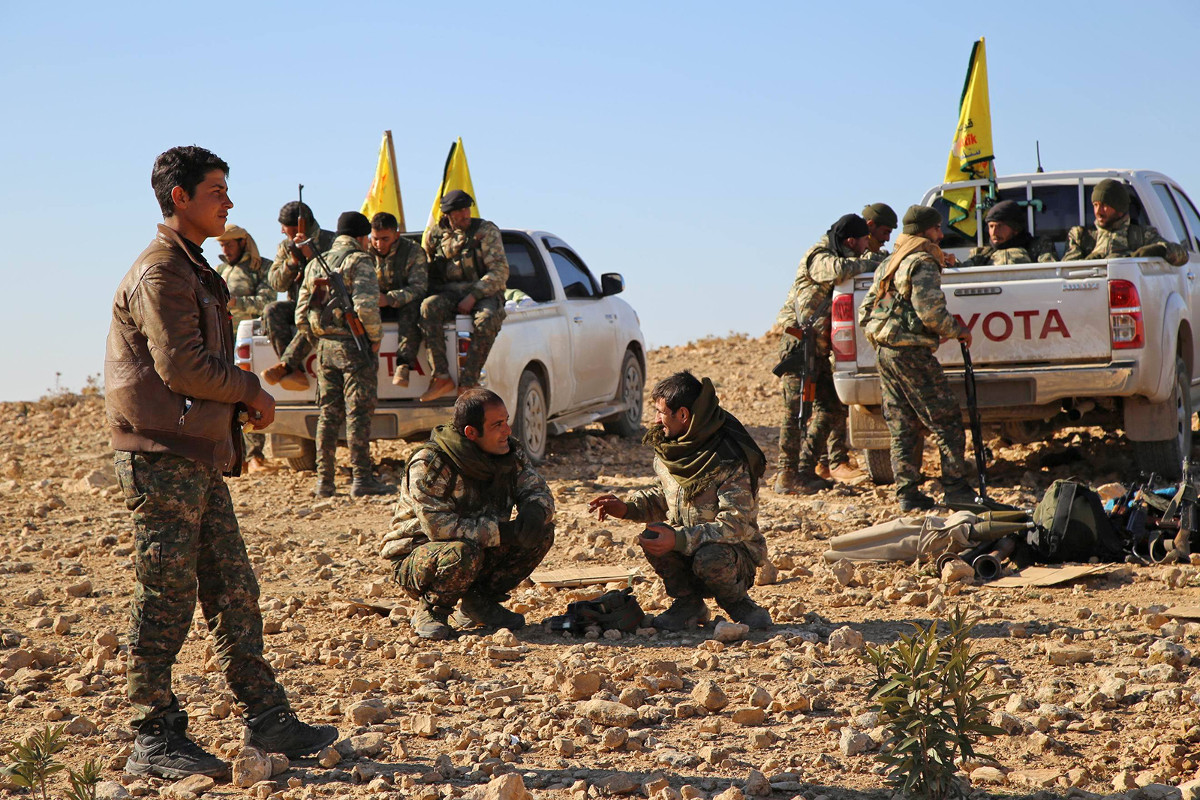
The core problem is that Turkish authorities see the YPG and a slew of other Kurdish factions at home, as well as in Iraq and Syria, as dangerous terrorists and separatists. Since 1984, Ankara has fought a domestic counter-insurgency campaign against the Kurdish Workers’ Party, or PKK, which has both practical and ideological ties to the YPG.
For its part, the United States has officially designated the PKK as terrorists and in 2007 the Pentagon began directly supplying intelligence for Turkish strikes and raids against the militants in northern Iraq as part of a mission called Operation Nomad Shadow.
However, officials in Washington viewed the YPG as a separate entity. As the U.S.-led fight against ISIS expanded, the United States began to see the group as a reliable and capable partner in Syria and potentially the lead element of a larger force to liberate Raqqa.
“I mean, I’ve talked to their [YPG] leaders, and we’ve watched them operate,” U.S. Army Lieutenant General Stephen Townsend, the head of Combined Joint Task Force-Operation Inherent Resolve (CJTF-OIR), told reporters on March 1, 2017. “They continually reassure us that they have no desire to attack Turkey, that they’re not a threat to Turkey.”
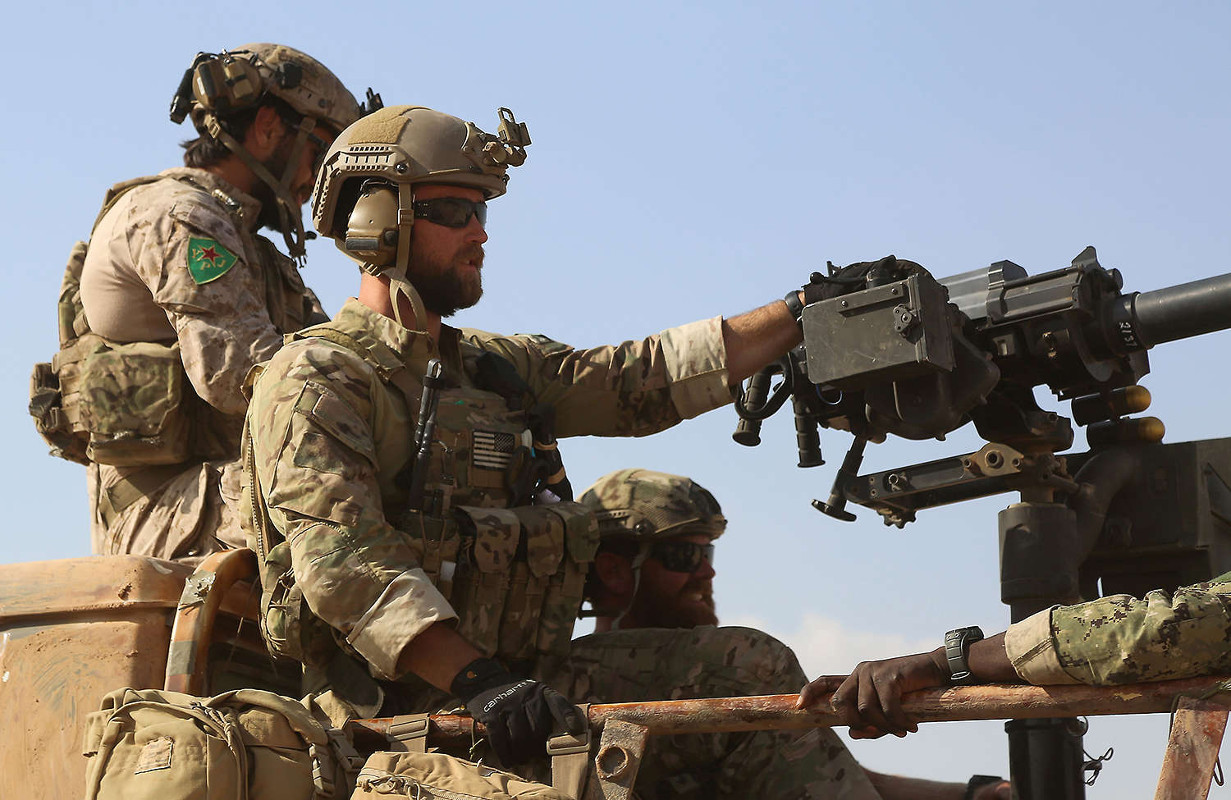
The Pentagon has repeatedly tried to find a middle ground with Turkey on the issue and be sensitive to the country’s point of view. When Turkish officials complained in May 2016 about American special operators wearing the insignia of the YPJ – the all-female counterpart to the YPG – American commanders swiftly curtailed the practice. Three months later, the U.S.-led anti-ISIS coalition acquiesced to a major Turkish intervention into Syria, known as Operation Euphrates Shield, even though its goals were not entirely aligned with the counter-terrorism fight.
But with Syria’s civil war opening the door for Kurdish factions to make significant territorial gains, along with its active partnership with the United States, Turkey has become more and more worried about the long-term structure of the region. And the presence of American special operations forces in the region hasn’t stopped Turkey from taking an increasingly hard-line stance broadly against Kurdish groups along its borders. Turkish air and ground forces have launched numerous missions into Syria to either block or directly attack the YPG and other Kurdish groups, often without consent from CJTF-OIR.
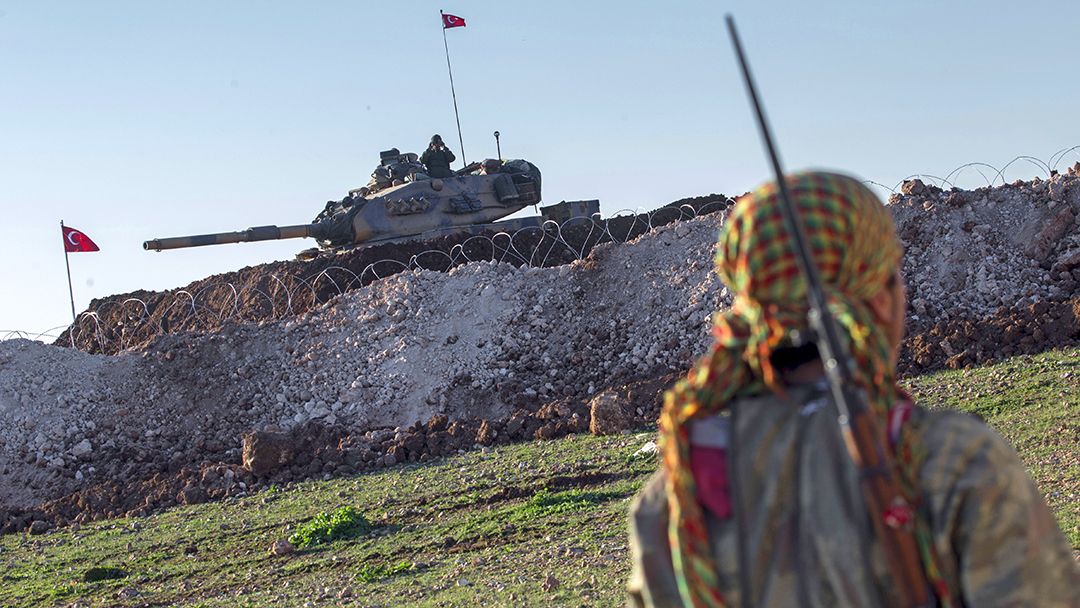
“As you know, Turkey conducted airstrikes in northern Syria’s Hasakah province the night before last, resulting in the loss of life of our partnered forces in the fight against ISIS,” U.S. Air Force Colonel John Dorrian, a CJTF-OIR spokesman, said during a press conference on April 26, 2017. “As you’ve seen, the strikes that the Turkish Air Force conducted last night also killed several Kurdish Peshmerga fighters in this vicinity of Sinjar. … We’re troubled by that.”
According to the Pentagon, American troops were unharmed in the strikes. Though they were six miles from the target area, Dorrian said Turkish forces put them in an “unsafe” predicament. The situation looks set to get more tense in near term. On March 30, 2017, the Turkish military had announced Operation Euphrates Shield had officially ended. However, Turkey’s military moves along its border with Syria and the latest attacks inside the country stoked fears that these moves could disrupt the push to eject ISIS from Raqqa, putting its concerns about increased Kurdish autonomy or a future independent Kurdistan over the need to contain the brutal terrorist group.
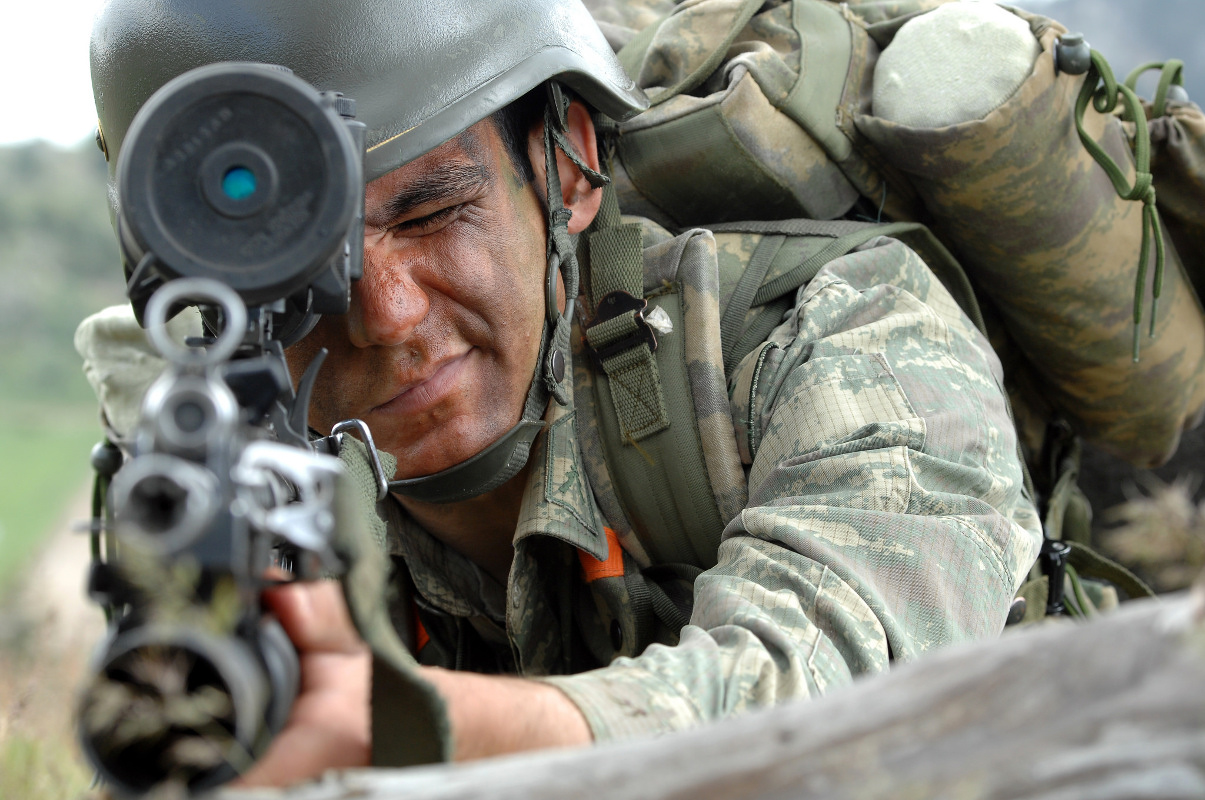
Anonymous Turkish authorities effectively confirmed the country’s priorities to Reuters in March 2017. “Our soldiers will not be fighting together with people who shot us and killed our soldiers and are trying to kill us,” one unnamed official told the news outlet. “We told them [the United States] there are many alternatives for Raqqa and they didn’t disagree,” another explained.
It’s not clear how or when the two sides will settle these issues. This is hardly the first time Turkey has spurned its long-time ally and fellow NATO member over military activities it sees as benefiting Kurdish rebels. When Saddam Hussein launched an offensive in Kurdish areas in northern Iraq in 1996, Turkey refused to allow American warplanes to stage strikes from their territory. Seven years later, the government in Ankara blocked the Pentagon’s plans to use Incirlik Air Base to launch a second front in the U.S.-led invasion of Iraq, dubbed Operation Iraqi Freedom.

Unfortunately, it also seems unlikely the U.S.-led coalition will be able to successfully defeat ISIS in Syria without finding some sort of resolution. Turkey is a key part of the program to train and equip so-called Vetted Syrian Opposition (VSO) groups to fight ISIS and hosts a number of facilities supporting the project, not least of which is Incirlik. And though this effort has spanned at least five countries, as of August 2015, the coalition’s Syria Engagement Team only had representatives situated in Turkey and Jordan to coordinate with rebel groups across the border, according a heavily redacted report the author previously obtained through the Freedom of Information Act.
On top of that, Turkish officers are part of the multi-national Special Operations Joint Task Force-Operation Inherent Resolve (SOJTF-OIR), which coordinates all special operations activities against Islamic State in both Iraq and Syria. At least of two individuals from the Turkey’s military were in attendance at a ceremony for members of the task force’s headquarters at an undisclosed location on April 14, 2017.

Not surprisingly, Turkey has favored ethnic Turkmen rebels over the Kurds. “We told them we have enough forces, enough Free Syrian Army,” one of the anonymous Turkish officials declared to Reuters. Neither the United States nor Turkey has seemed willing to make any concessions, leading officials in Anakara to even mend strained ties with Russia in order to pursue their specific goals.
The YPG themselves seem undeterred by the developments, looking to continuing working with American forces battling ISIS around Raqqa in a build-up to an all-out assault on the city. Turkey’s offensive “is not an unexpected development,” Sipan Hemo, the YPG General Commander, told Al-Monitor. “We noted how the American troops working with us were upset that they couldn’t stop these Turkish attacks.”
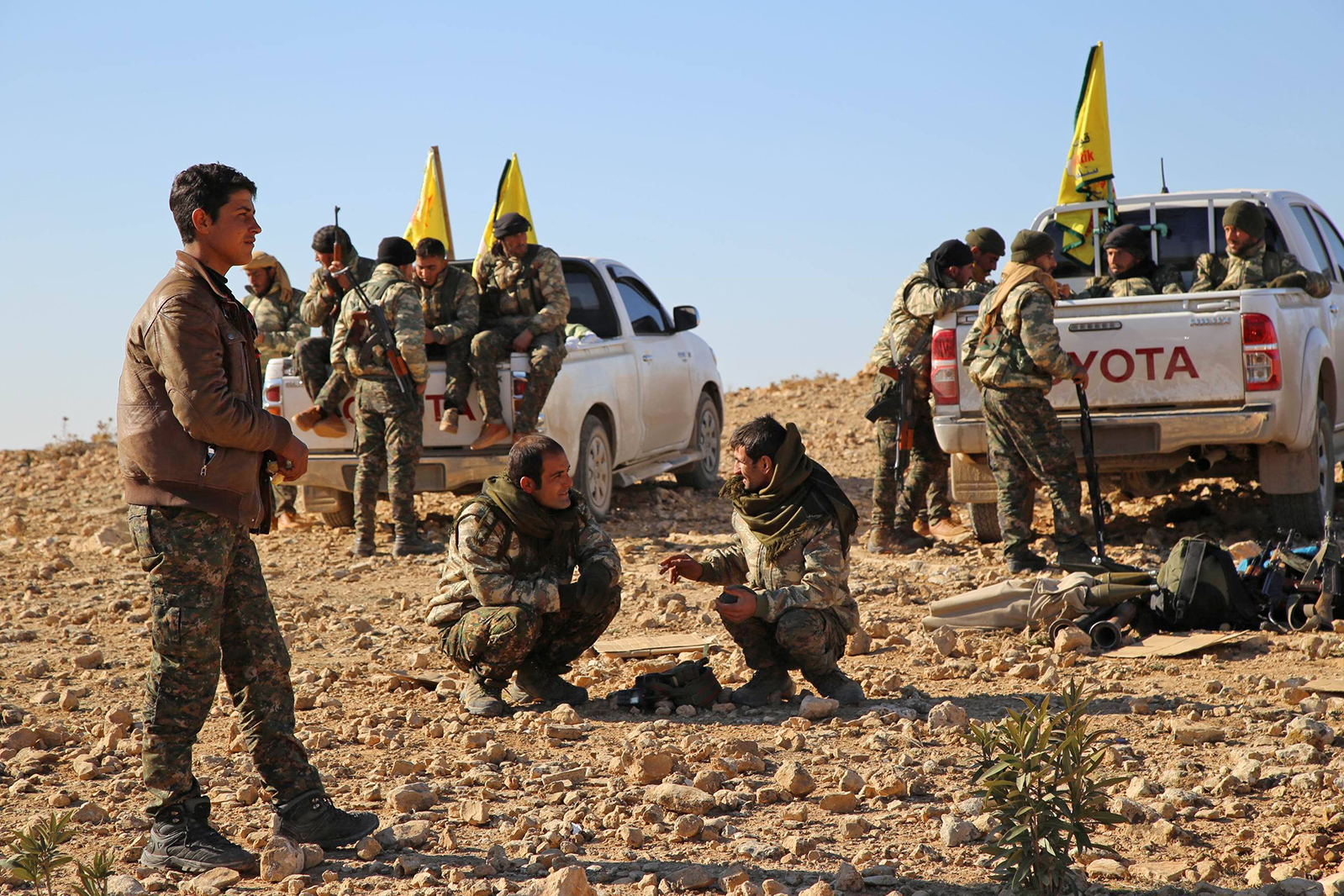
The deployment of U.S. special operators and their Strykers to Dirbêsiyê makes it clear American commanders haven’t given up on this strategy just yet. But the time spent acting as peacekeepers can only detract from the campaign against ISIS and could ultimately give the terrorists space to regroup and counter-attack, not to mention put them at increasing risk of a disasterous friendly fire incident.
“If these attacks continue, the Raqqa operation will suffer, as we will have to fight on two fronts,” Hemo conceded. “Certainly Russia, Iran, and Syria will be happy, because they all want the [U.S.-backed] Raqqa operation to fail.”
Contact the author: joe@thedrive.com
